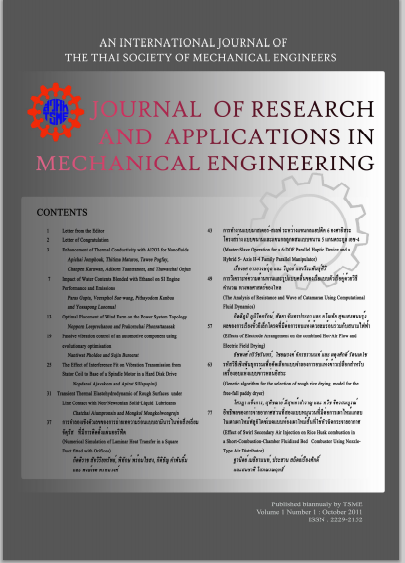Optimal placement of wind farm on the power system topology
Main Article Content
Abstract
Wind farms can be used in domestic, community and smaller wind energy projects and these can be either stand-alone or grid-connected systems. The stand-alone systems are used to generate electricity for charging batteries to run small electrical applications, often in remote locations where connection to a main power supply is expensive or not physically possible. With grid-connected turbines, the output from the wind turbine is directly connected to the existing main electricity supply. This type of system can be used both for individual wind turbines and for wind farms exporting electricity to the electricity network. A grid-connected wind turbine can be a good proposition if consumption of electricity is high. In this paper, we formulated a wind farm in form of doubly-fed induction generator penetrating into an existing power system. An optimal placement of a wind farm on the power system topology is proposed aiming to minimize fuel and emission costs of the overall system. The multiobjective particle swarm optimization (MPSO) is used to minimize simultaneously fuel cost and emission of existing thermal units by changing location and varying sizes of new wind farm candidate. We employ IEEE 30-bus system to verify the proposed technique. The results show that the proposed method found the optimal position of the wind farm with minimum cost of fuel and environmental pollution.
Article Details
This work is licensed under a Creative Commons Attribution-NonCommercial-ShareAlike 4.0 International License.
References
[2] Lin, C.J., Yu, O.S., Chang, C.L., Liu, Y.H., Chuang, Y.F., Lin, Y.L., 2007. Challenges of wind farms connection to future power systems in Taiwan. Renewable Energy, Vol. 34, No. 8.
[3] Saidur, R., Islam, M.R., Rahim, N.A., Solangi, K.H., 2010. A review on global wind energy policy. Renewable and Sustainable Energy Reviews, Vol. 14, No. 7 pp. 1744-1762.
[4] Krichen, L., Aribia, H.B., Abdallah, H.H., Ouali, A., 2008. ANN for multi-objective optimal reactive compensation of a power system with wind generators. Electric Power Systems Research, Vol. 78, No. 9, pp. 1511-1519.
[5] Abido, M.A., 2009. Multiobjective particle swarm optimization for environmental/economic dispatch problem. Electric Power Systems Research, Vol. 79, No. 7, pp. 1105-1113.
[6] Sag, T., Cunkas, M., 2009. A tool for multiobjective evolutionary algorithms. Advances in Engineering Software, Vol. 40, No. 9, pp. 902-912.
[7] Kennedy, J., Eberhart, R., 1995. Particle swarm optimization. In: Proceeding of the 4th IEEE International Conference on Neural Networks, pp. 1942-1948.
[8] Abido, M.A., 2002. Optimal power flow using particle swarm optimization. International Journal of Electrical Power & Energy Systems, Vol. 24, No. 7, pp. 563-571.
[9] Alsac, O., Stott, B., 1974. Optimal Load Flow with Steady-State Security. Power Apparatus and Systems, IEEE Transactions on , Vol. PAS-93, No. 3, pp.745-751.
[10] Mendoza, F., Bernal-Agustin, J.L., Dominguez-Navarro, J.A., 2006. NSGA and SPEA Applied to Multiobjective Design of Power Distribution Systems. Power Systems, IEEE Transactions on, Vol. 21, No. 4, pp.1938-1945.



